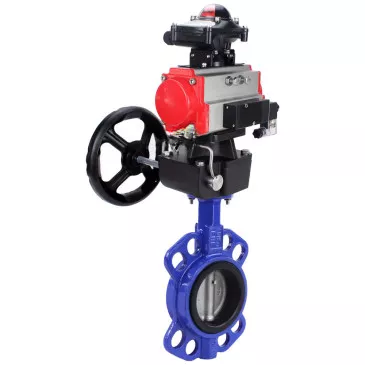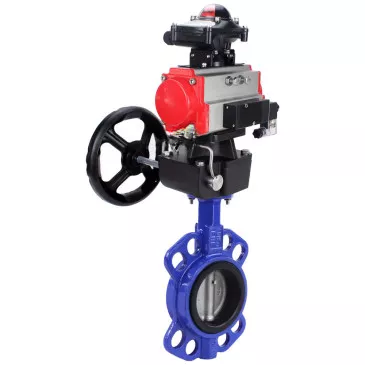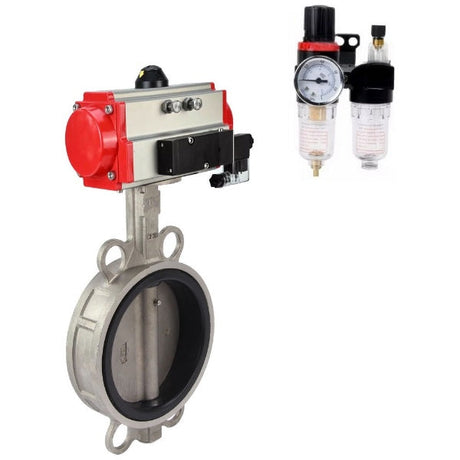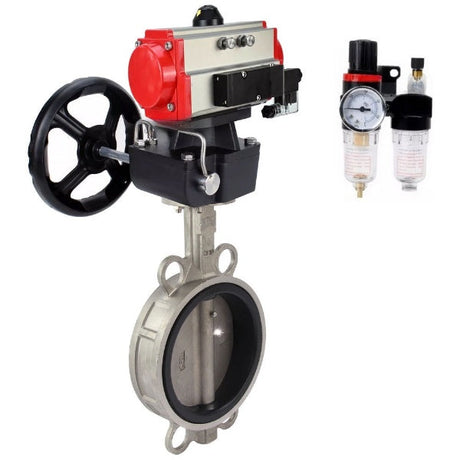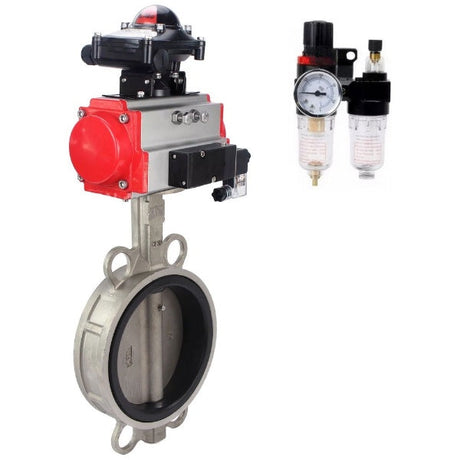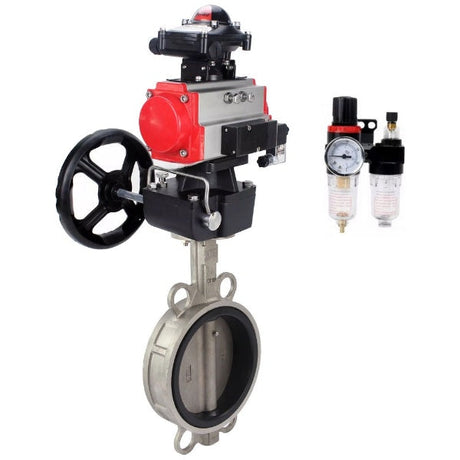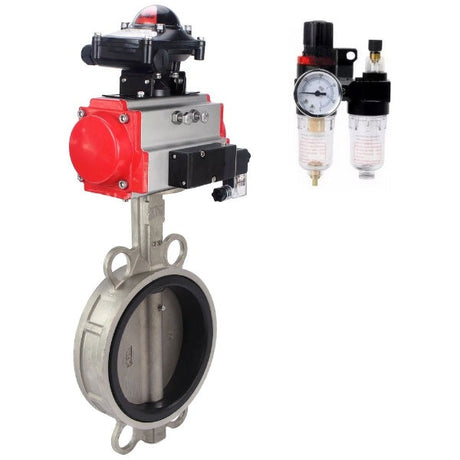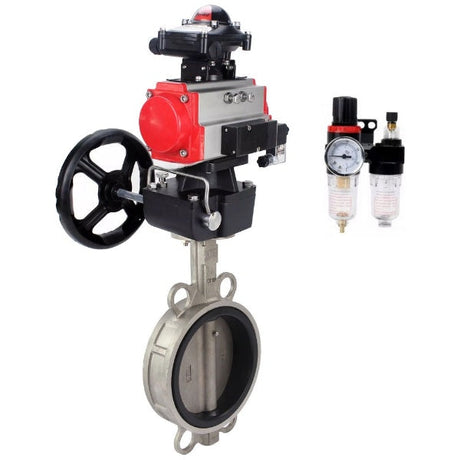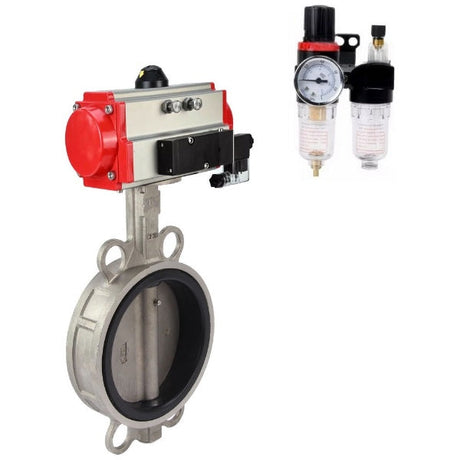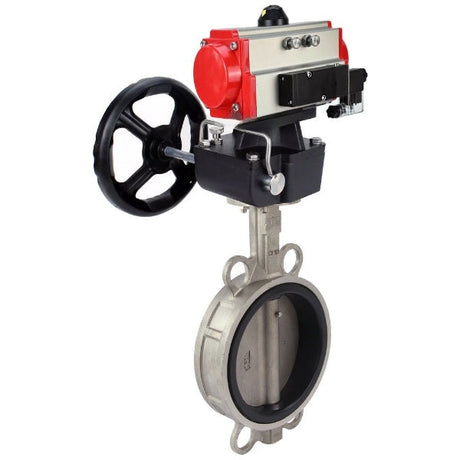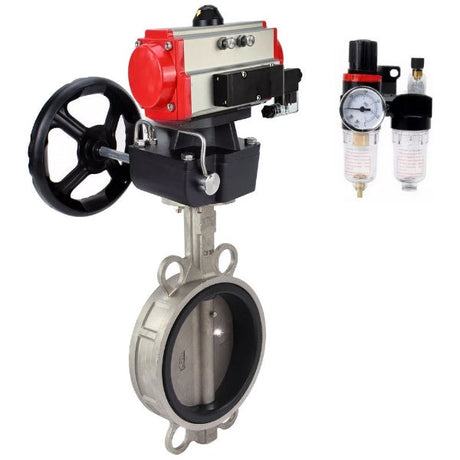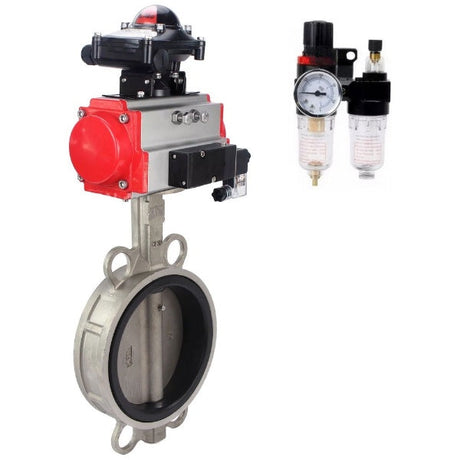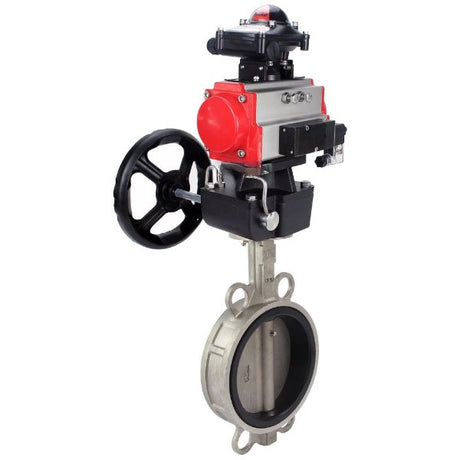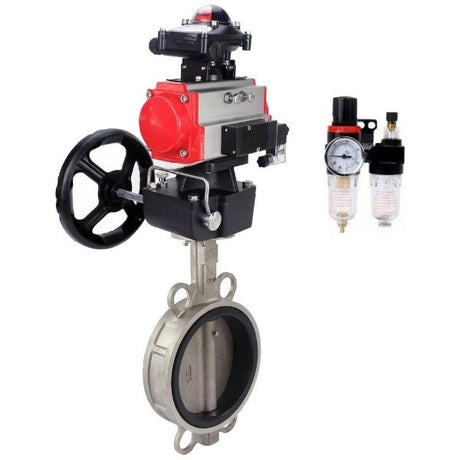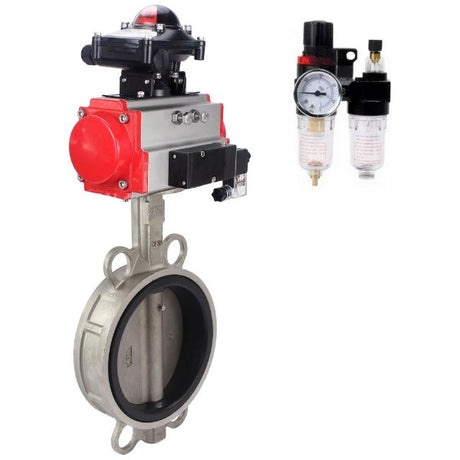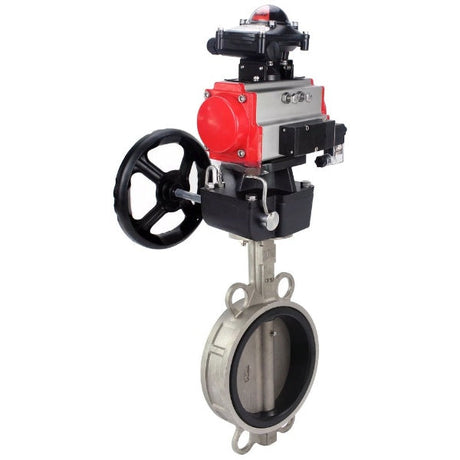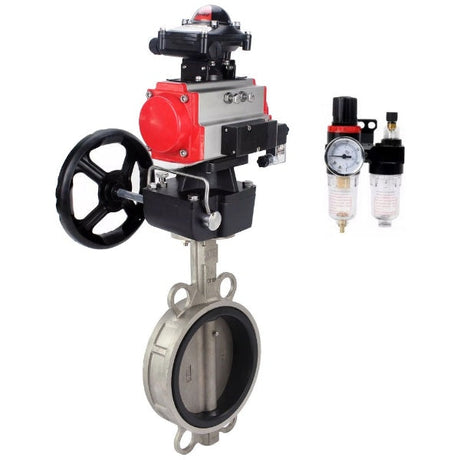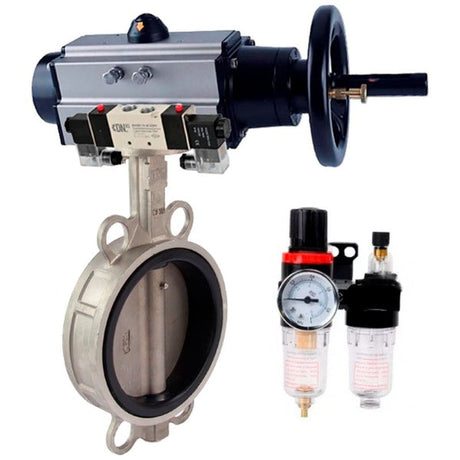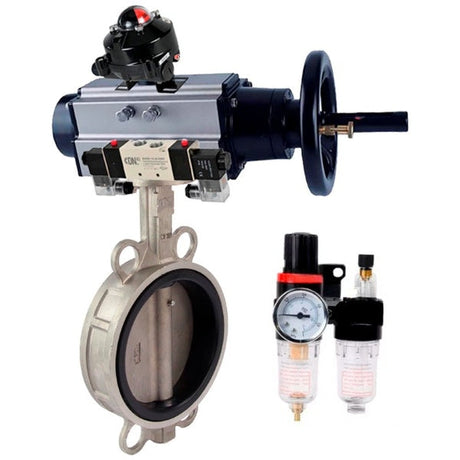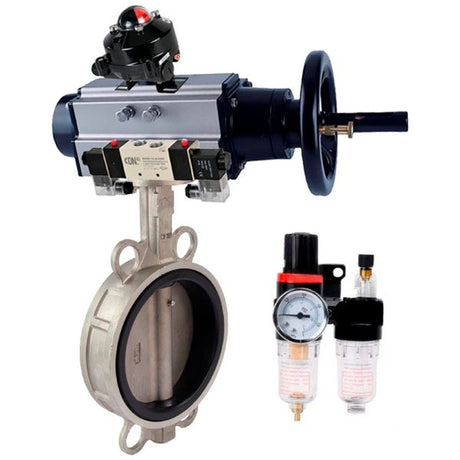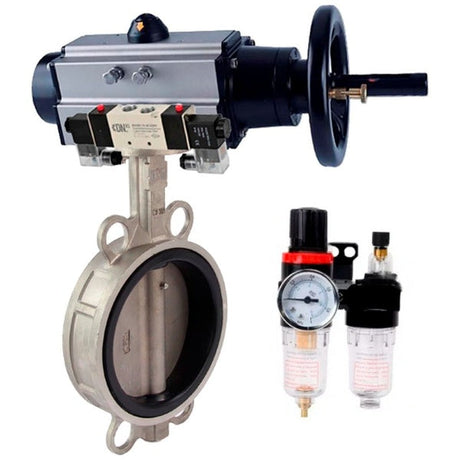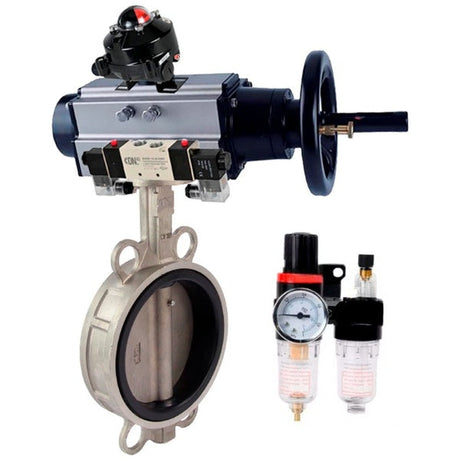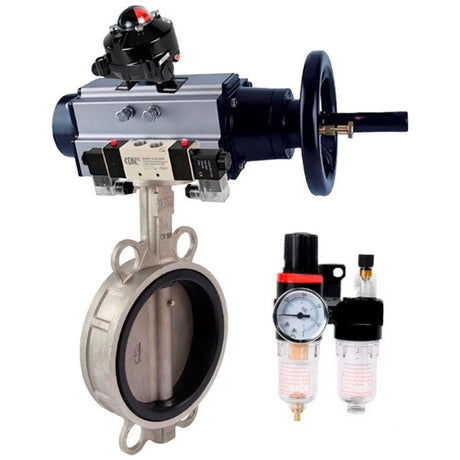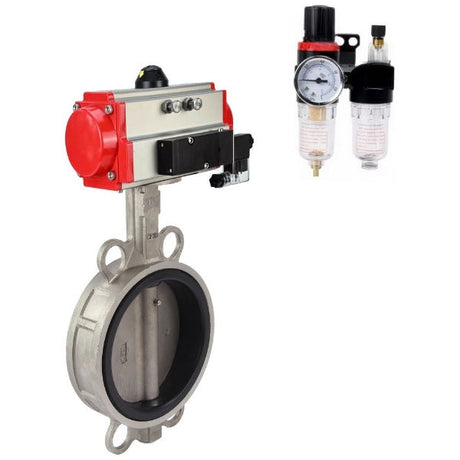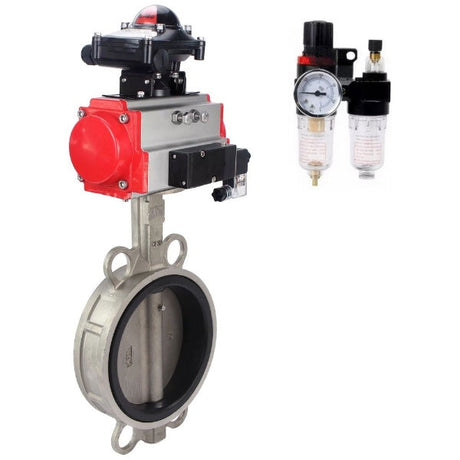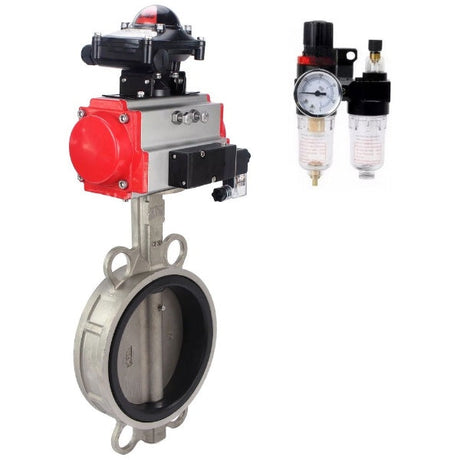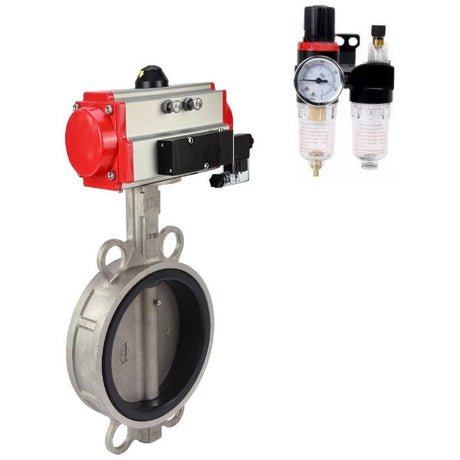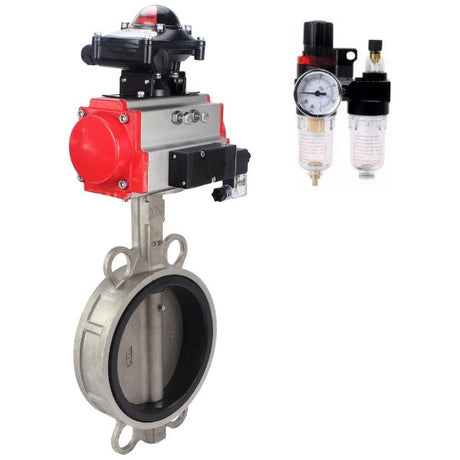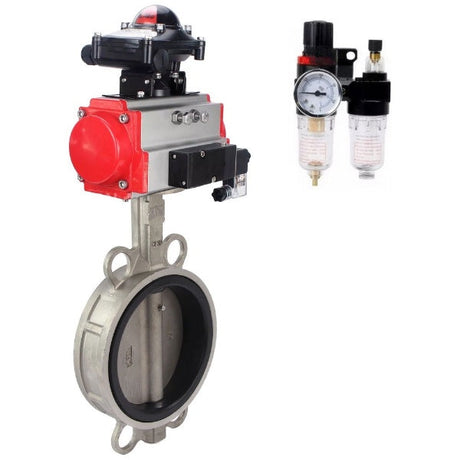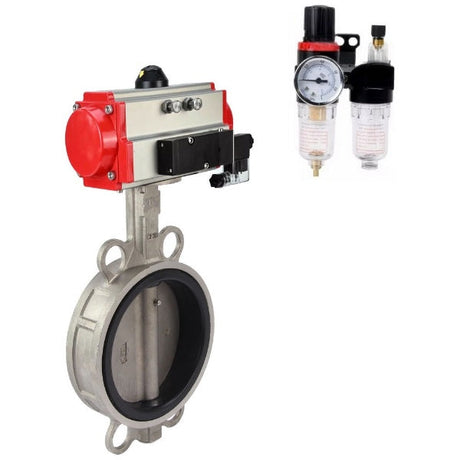Butterfly Valves: Overview and Applications
Butterfly valves are essential for industrial and hygienic applications, offering efficient flow control with a compact design. With types like lugged, wafer, and double-flanged, these valves provide reliable performance across diverse conditions. Below, we explore their design, applications, and benefits to help you make an informed choice.
Key Features and Design Options
Butterfly valves are available in a wide range of materials and configurations to meet specific needs.
1. Mounting Options
- Lugged valves: Feature tapped holes for secure installation and allow easy maintenance by isolating sections of the pipeline.
- Wafer valves: Lightweight and economical, ideal for tight spaces.
- Double-flanged valves: Designed for high-pressure systems, commonly rated PN16 or PN10.
2. Material Selections
- Ductile iron or bronze for industrial durability.
- Hygienic-grade materials like stainless steel or liners for food and beverage applications.
- EPDM or PTFE liners for chemical and temperature resistance.
3. Actuation Options
- Manual lever control for straightforward applications.
- Pneumatic or motorized actuation for automated and precise operations.
- Accessories such as gearboxes enhance operational efficiency.
4. Certifications
- WRAS-approved valves for potable water systems.
- Compliance with industrial and environmental standards.
Benefits of Butterfly Valves
Butterfly valves stand out for their simplicity and versatility. Key advantages include:
- Quick Operation: Rapid opening and closing using a manual lever or actuator.
- Space-Saving Design: Ideal for areas with limited room.
- Cost-Effectiveness: Economical compared to alternatives like gate or globe valves.
- Wide Applications: Suitable for industrial, chemical, marine, and hygienic use.
Applications Across Industries
Butterfly valves are used in many applications, including:
1. Industrial Uses
- Chemical processing plants requiring high-temperature resistance.
- Marine systems and offshore facilities with corrosive environments.
- HVAC systems for gas and liquid flow control.
2. Hygienic Processes
- Food and beverage production, utilizing non-toxic materials and EPDM seats.
- Cleanroom systems where hygienic standards are critical.
3. Water Treatment
- Regulation of flow in municipal and industrial water systems.
- Handling wastewater in challenging environments.
Choosing the Right Valve
To select the right butterfly valve, take into account the following considerations:
- Application Requirements: Choose lugged, wafer, or flanged designs based on pressure and maintenance needs.
- Material Compatibility: Ensure the valve material resists your operating conditions.
- Actuation Type: Opt for manual, pneumatic, or electric actuation depending on control precision.
- Certifications: Confirm compliance with standards like WRAS for potable water.
Maintenance and Accessories
Butterfly valves are designed for long service life and easy maintenance:
- Accessories such as gearboxes, control kits, and spare parts are readily available.
- Regular inspections ensure durability under extreme conditions.
- Replacement liners and discs extend operational efficiency.
Frequently Asked Questions
What are the main types of butterfly valves?
What are the main types of butterfly valves?
Can butterfly valves be used in hygienic applications?
Can butterfly valves be used in hygienic applications?
What is the difference between manual and pneumatic actuation?
What is the difference between manual and pneumatic actuation?
How do I select the right butterfly valve for my application?
How do I select the right butterfly valve for my application?
Do butterfly valves require regular maintenance?
Do butterfly valves require regular maintenance?
